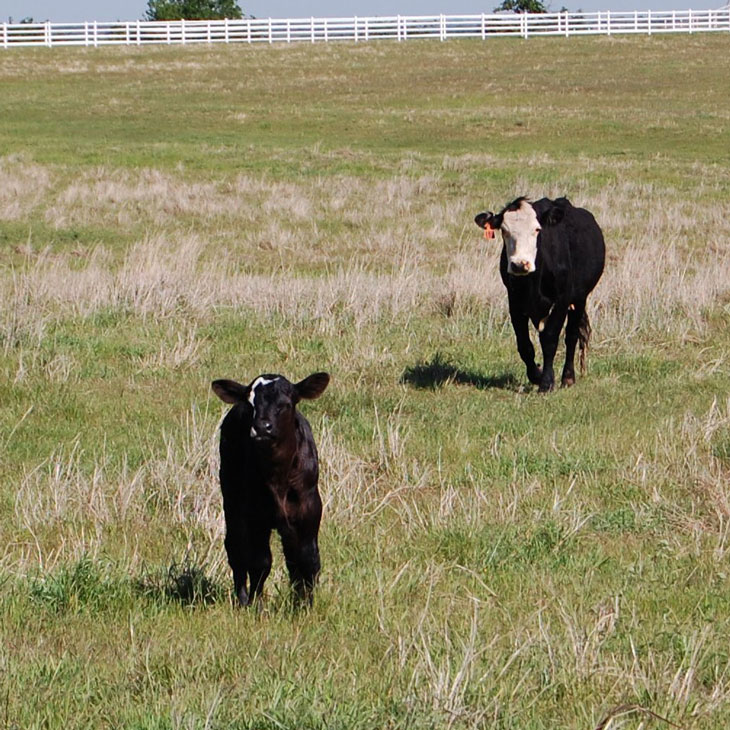
Begin with the end in mind
Wednesday, October 9, 2019
Regardless of the calving season chosen for an individual program, we need to be thinking about preparing for the health needs of our breeding herd well before we are ready to AI or turn the bulls out. Health in our breeding herd is essential, and we must begin with the end in mind, focusing on our final product – healthy productive calves.
A one-size-fits-all herd health program does not exist. It is important to recognize that each herd is unique and will have different needs based on management, genetics, geography, nutrition, and other factors. Consultation with your veterinarian, as well as a nutritionist and other specialists, may well be warranted. Although we will focus here on vaccination protocols, there are multiple factors that lead to a healthy breeding herd and ultimately healthy calf crop. Appropriate body condition along with adequate vitamin and mineral intake is essential for all animals to respond appropriately to vaccinations. Vaccinating during times of low stress also positively impacts the response to immunizations.
Choosing the right vaccines for your specific program can get complicated in a hurry. What diseases should be covered in our vaccine? Do we choose killed or a modified live vaccine? Do we give a booster or not? Are there risks involved? When should we administer the vaccine? What is the cost? Are we handling vaccine and administering immunizations correctly?
If we are focusing on calves as an end product, we need to make sure that their dams are adequately protected with strong immune systems to deliver a high concentration of colostral antibodies through nursing in those first few hours of life. In general, breeding animals should be vaccinated at least annually to cover the diseases of concern for your program and area. Vaccination protocols should be critically evaluated each year, and we should really take a look at whether the plan we have been using for years is still the best option.
Vaccine considerations may include diseases such as infectious bovine rhinotracheitis (IBR), bovine parainfluenza virus, bovine respiratory syncytial virus, bovine viral diarrhea virus, clostridial organisms (commonly referred to as blackleg and tetanus), brucellosis and others. Each class of breeding animals may have a different protocol: heifers vs. previously vaccinated cows vs. cows with unknown vaccination status vs. bulls. The American Association of Bovine Practitioners is currently reviewing their recommended vaccines and this can be a good starting place to begin the discussion with your veterinarian. Customizing a vaccination protocol specific to individual groups in your program is always best. We often spend a great deal of time focusing on female vaccination protocols in our breeding programs, but bulls should not be forgotten, especially if they will be introduced to your herd for the first time.
When choosing between vaccines it may seem even more complicated. The current vaccination status of your herd and your planned timing of administration will determine whether killed or modified-live vaccine is best. Consulting with your veterinarian for specific vaccine choices well in advance of breeding season is one of the best decisions you can make. As has been previously mentioned, selections will be based on multiple factors. Previous vaccinations and pregnancy status should always be discussed when developing your plan. The best vaccine option will be one that provides protective immune coverage for diseases of concern balanced with a defined management timeline and expense.
Appropriate handling and administration of vaccines are always important. Vaccines are sensitive to extremes in heat and cold. Vaccines should be purchased from reputable sources and kept at temperatures to maintain efficacy. Keeping a refrigerator thermometer in your processing barn refrigerator is an inexpensive way to make sure that your storage temperatures stay within acceptable ranges. Maintaining the temperature of vaccine is equally important when processing. It is very easy for personnel to become side tracked and allow vaccine to get too warm or too cold. Vaccinations should always be administered according to label recommendations as directed by your veterinarian and in accordance with Beef Quality Assurance guidelines.
Starting the discussion on vaccination protocols early with annual review of your protocol is essential. Risks for your area, current status of your herd and destination of calves are all factors that should be included in the discussion with your veterinarian and herd health team. Calves are the end product to keep in mind regardless of whether you will be retaining or marketing them immediately. Profitable healthy calves are a reflection of preparation of your breeding herd and vaccinations are a critical piece of this plan.
STORY BY: Dr. Rosslyn Biggs, an assistant clinical professor at Oklahoma State University’s College of Veterinary Medicine. She earned her DVM degree from Oklahoma State University and currently serves as a beef cattle extension specialist and director of continuing education.
MEDIA CONTACT: Taylor Bacon | Public Relations and Marketing Coordinator | 405-744-6728 | taylor.bacon@okstate.edu
